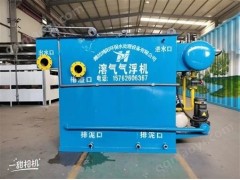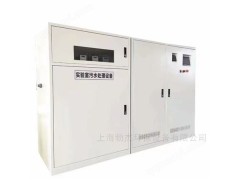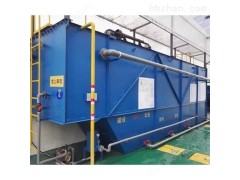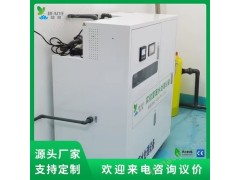- 型号:
- GSJ-1000
1. Product Overview
In municipal, chemical, papermaking and other water treatment processes, water mixing is one of the key processes. Traditional mixing machinery is divided into two commonly used methods: vertical shaft folding paddle type and horizontal (submersible) type. Since the installation method and blade form determine its mixing form, both in terms of energy consumption and mixing effect. It is not ideal. It not only brings unnecessary increase to the operating cost of the sewage plant, but also directly affects the final process treatment effect. In response to the above problems, after many years of experiments and with the help of the design experience of peers, a new curved surface mixer has been successfully developed. After many years of practical application in many sewage treatment plants, it has achieved good results and filled the gap in this type of product in the country. And become the first choice product to replace imported products.
2. Scope of application: The
hyperboloid mixer is one of the most advanced, most efficient, and most
recommended mixers developed by our company. It is widely used in environmental protection, chemical industry, energy, light industry and other industries where solid-liquid and gas mixing of liquids is required. It is especially suitable for coagulation tanks and regulating tanks in sewage treatment processes. , anaerobic tank, nitrification and denitrification tank.
Working principle:
The upper surface of the curved impeller body of the hyperboloid mixer is a hyperboloid structure formed by the rotation of the hyperbola bus around the axis of the impeller body. Its unique impeller structure design maximizes the
Fluid properties combined with mechanical motion. The equation of the hyperbola is b. In order to cater to the flow of water, the curved body formed by rotating the curve along the axis is designed to inlet water from the center of the impeller. On the one hand, it reduces the turbulence of the incoming water, and on the other hand, it ensures that the liquid has no impact on the impeller. The pressure on the surface is uniform, thus ensuring the balance of the whole machine in motion. There are eight guide vanes evenly distributed on the involute double arc surface. The potential energy obtained by replenishing the water with the help of the liquid's own weight pressure forms kinetic energy with the centrifugal force generated when the impeller rotates. The liquid passes through the hyperboloid surface under the action of gravity acceleration. The structural transition moves tangentially along the circumferential direction of the impeller
. Under the reflection of the pool wall, a top-down circulating water flow is formed, so cross flow in the axial () and radial () directions can be obtained
(such as hyperboloid flow diagram).
It is precisely because of the scope of application:
The hyperboloid mixer is one of the most advanced, most efficient, and most
recommended mixers developed by our company. It is widely used in environmental protection, chemical industry, energy, light industry and other industries where solid-liquid and gas mixing of liquids is required. It is especially suitable for coagulation tanks and regulating tanks in sewage treatment processes. , anaerobic tank, nitrification and denitrification tank.
Working principle:
The upper surface of the curved impeller body of the hyperboloid mixer is a hyperboloid structure formed by the rotation of the hyperbola bus around the axis of the impeller body. Its unique impeller structure design maximizes the
Fluid properties combined with mechanical motion. The equation of the hyperbola is b. In order to cater to the flow of water, the curved body formed by rotating the curve along the axis is designed to inlet water from the center of the impeller. On the one hand, it reduces the turbulence of the incoming water, and on the other hand, it ensures that the liquid has no impact on the impeller. The pressure on the surface is uniform, thus ensuring the balance of the whole machine in motion. There are eight guide vanes evenly distributed on the involute double arc surface. The potential energy obtained by replenishing the water with the help of the liquid's own weight pressure forms kinetic energy with the centrifugal force generated when the impeller rotates. The liquid passes through the hyperboloid surface under the action of gravity acceleration. The structural transition moves tangentially along the circumferential direction of the impeller
. Under the reflection of the pool wall, a top-down circulating water flow is formed, so cross flow in the axial () and radial () directions can be obtained
(such as hyperboloid flow diagram).
It is precisely due to the structural characteristics of the hyperboloid mixer impeller and the characteristics of being installed close to the bottom of the pool that its working position determines that its anti-settling effect on suspended objects is direct and can be obtained during work. The ideal stirring effect can effectively eliminate stirring dead corners. The larger specific surface area can achieve a large area of water exchange. It is one of the most advanced, most efficient and most recommended mixers developed by our company. It is widely used in environmental protection, chemical industry, energy, light industry and other industries where solid-liquid and gas mixing of liquids is required. It is especially suitable for coagulation tanks and regulating tanks in sewage treatment processes. , anaerobic tank, nitrification and denitrification tank.
Working principle:
The upper surface of the curved impeller body of the Type series curved surface mixer is a hyperboloid structure formed by the rotation of the hyperbola bus around the axis of the impeller body. Its unique impeller structure design maximizes the
Fluid properties combined with mechanical motion. The equation of the hyperbola is b. In order to cater to the flow of water, the curved body formed by rotating the curve along the axis is designed to inlet water from the center of the impeller. This on the one hand reduces the turbulence of the incoming water and on the other hand ensures that the liquid has no impact on the impeller. The pressure on the surface is uniform, thus ensuring the balance of the whole machine in motion. There are eight guide vanes evenly distributed on the involute double arc surface. The potential energy obtained by replenishing the water with the help of the liquid's own weight pressure forms kinetic energy with the centrifugal force generated when the impeller rotates. The liquid passes through the hyperboloid surface under the action of gravity acceleration. The structural transition moves tangentially along the circumferential direction of the impeller
. Under the reflection of the pool wall, a top-down circulating water flow is formed, so cross flow in the axial () and radial () directions can be obtained
(such as hyperboloid flow diagram).
It is precisely because of the structural characteristics of the type series curved surface mixer impeller and the characteristics of being installed close to the bottom of the pool that its working position determines that it has a direct anti-settling effect on suspended matter, and the ideal mixing effect can be obtained during work. It can effectively eliminate mixing dead corners. The large specific surface area allows for a large area of water exchange. The structural characteristics of the mixer impeller and the characteristics of being installed close to the bottom of the pool. Its working position determines that it has a direct anti-sedimentation effect on suspended matter. It can obtain ideal mixing effects during work and can effectively eliminate mixing dead corners. The large specific surface area allows for a large area of water exchange.












 Year1
Year1




 WhatsApp
WhatsApp





